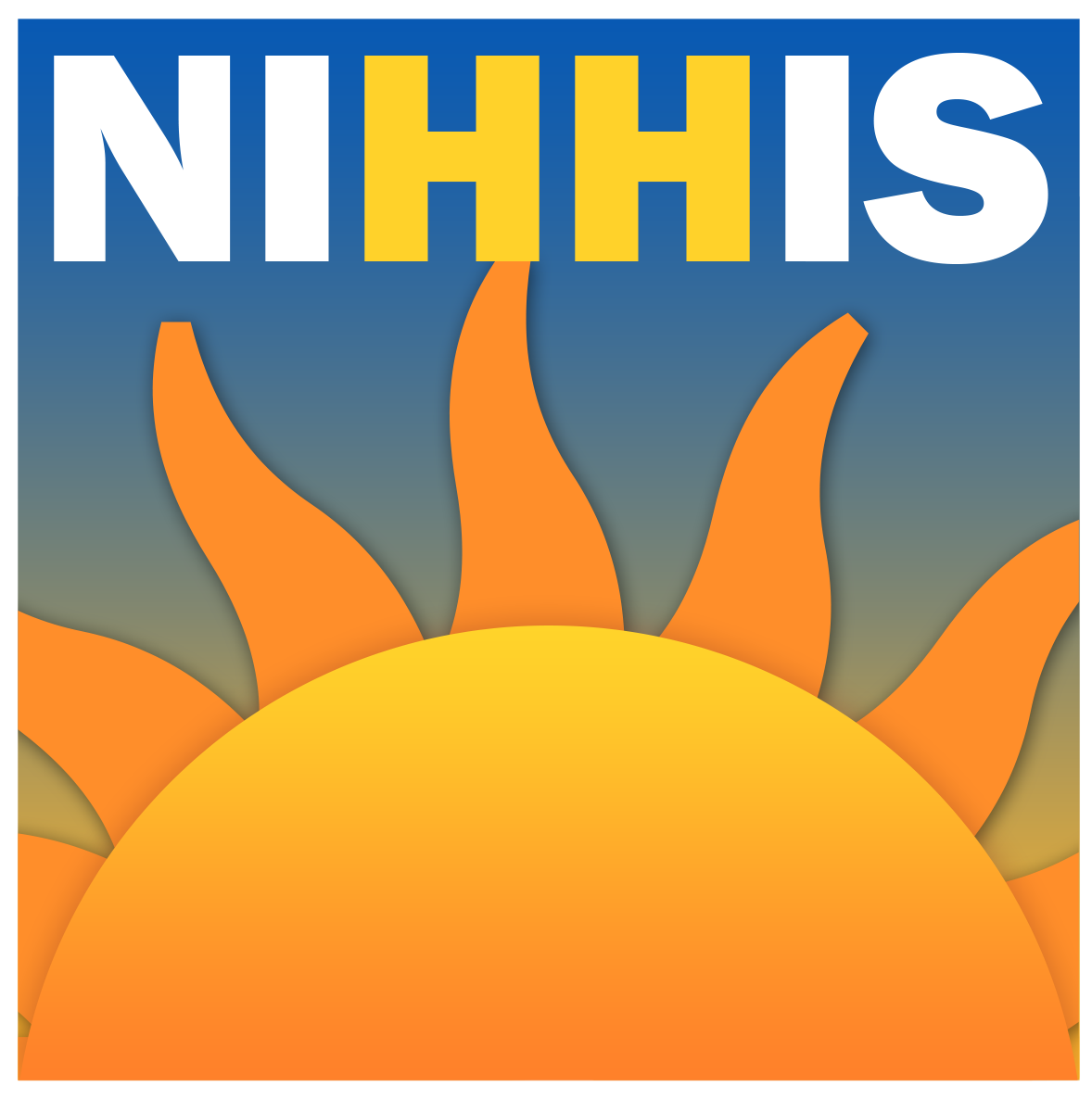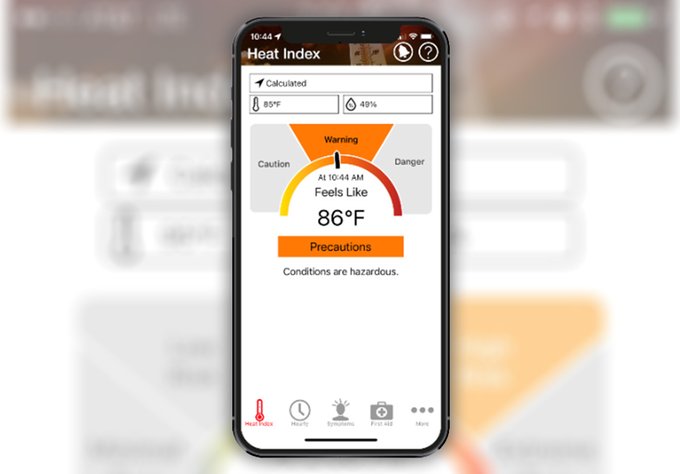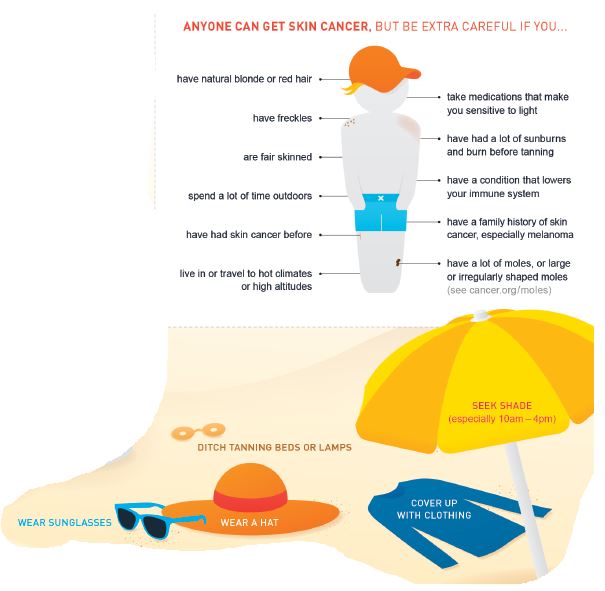Heat Related Illness Prevention & Planning
Extreme heat is an increasing problem for all parts of the United States, and our changing climate means more parts of the country are likely to see extreme heat days in the future. Hotter temperatures are especially hard on children, older adults, outdoor workers and athletes, overburdened groups, and those already suffering from chronic illnesses.
Heat related illnesses and death are largely preventable with proper planning, education, and action. The National Integrated Heat Health Information System (NIHHIS), serves as the premier source of heat and health information for the nation to reduce the impacts of extreme heat.


Visit Heat.gov for current conditions, future forecasts, tools & information, and tips on planning & preparing for excessive heat events.
Skin Cancer Prevention

Picture above from www.cancer.org
Skin cancer prevention is something every one can take charge of in their life. From wearing 100% UVA & UVB sunglasses, to minimizing sun exposure during peak UV times (usually from 10am - 2pm). You can be sun smart & choose your cover!
The U.S. Environmental Protection Agency (EPA) recommends these action steps to help you and your family be “SunWise":
Do NOT Burn: Sunburns significantly increase one's lifetime risk of developing skin cancer, especially for children.
Avoid Sun Tanning and Tanning Beds: UV radiation from tanning beds and the sun causes skin cancer and wrinkling.
Generously Apply Sunscreen: Generously apply about one ounce of sunscreen to cover all exposed skin 15 minutes before going outside. Sunscreen should have a Sun Protection Factor (SPF) of at least 30 and provide broad-spectrum protection from both ultraviolet A (UVA) and ultraviolet B (UVB) rays. Reapply every two hours, even on cloudy days, and after swimming or sweating.
Wear Protective Clothing: Wear protective clothing, such as a long-sleeved shirt, pants, a wide-brimmed hat, and sunglasses, when possible.
Seek Shade: Seek shade when possible, and remember that the sun’s UV rays are strongest between 10 a.m. and 4 p.m.
Use Extra Caution Near Water, Snow and Sand: Water, snow and sand reflect the damaging rays of the sun, which can increase your chance of sunburn.
Check the UV Index: The UV Index provides important information to help you plan your outdoor activities in ways that prevent sun overexposure. The UV Index forecast is issued daily by the National Weather Service and EPA.
Get Vitamin D Safely: Get Vitamin D safely through a diet that includes vitamin supplements and foods fortified with Vitamin D. Don't seek the sun.
Check out these great resources: